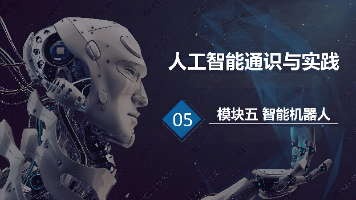java中反射机制的使用场景
反射是一种强大的技术,在框架开发、动态代理、插件系统、序列化和反序列化、测试和调试、注解处理以及通用库和工具的开发中非常有用。尽管反射提供了极大的灵活性,但在使用时应谨慎,以避免潜在的性能和安全问题。
·
Java中的反射机制提供了一种在运行时动态检查和操作类、方法、字段和构造函数的方式。反射在以下几个场景中非常有用:
1. 框架和库的开发
许多Java框架和库依赖反射来提供通用功能。典型的例子包括:
- Spring:使用反射来实现依赖注入、AOP(面向切面编程)等功能。
- Hibernate:使用反射来实现对象关系映射(ORM),在运行时动态地将数据库表与Java对象映射。
2. 动态代理
Java的动态代理使用反射来生成实现某些接口的代理类,这在AOP和拦截器模式中非常有用。
import java.lang.reflect.InvocationHandler;
import java.lang.reflect.Method;
import java.lang.reflect.Proxy;
interface MyInterface {
void doSomething();
}
class MyInvocationHandler implements InvocationHandler {
@Override
public Object invoke(Object proxy, Method method, Object[] args) throws Throwable {
System.out.println("Before method call");
Object result = method.invoke(this, args);
System.out.println("After method call");
return result;
}
}
public class DynamicProxyExample {
public static void main(String[] args) {
MyInterface proxyInstance = (MyInterface) Proxy.newProxyInstance(
MyInterface.class.getClassLoader(),
new Class<?>[]{MyInterface.class},
new MyInvocationHandler()
);
proxyInstance.doSomething();
}
}
3. 插件系统
反射允许在运行时动态加载和使用类,这使得插件系统可以在不重新编译和重新启动应用程序的情况下加载和执行新功能。
public class PluginLoader {
public static void main(String[] args) {
try {
Class<?> pluginClass = Class.forName("com.example.plugins.MyPlugin");
Object plugin = pluginClass.getDeclaredConstructor().newInstance();
Method executeMethod = pluginClass.getMethod("execute");
executeMethod.invoke(plugin);
} catch (Exception e) {
e.printStackTrace();
}
}
}
4. 序列化和反序列化
反射可以用于实现对象的序列化和反序列化,尤其是在自定义序列化框架中。它允许框架在运行时检查对象的字段并将其转换为序列化格式。
5. 测试和调试
反射在测试和调试中非常有用,特别是当需要访问和测试私有成员时。许多测试框架(如JUnit和Mockito)使用反射来创建测试用例和模拟对象。
import java.lang.reflect.Field;
public class ReflectionTestExample {
public static void main(String[] args) {
try {
MyClass obj = new MyClass();
Field field = MyClass.class.getDeclaredField("privateField");
field.setAccessible(true);
field.set(obj, "New Value");
System.out.println(field.get(obj));
} catch (Exception e) {
e.printStackTrace();
}
}
}
class MyClass {
private String privateField = "Initial Value";
}
6. 注解处理
反射用于读取类、方法和字段上的注解,许多框架使用注解来配置和控制应用程序行为。
import java.lang.annotation.Retention;
import java.lang.annotation.RetentionPolicy;
import java.lang.reflect.Method;
@Retention(RetentionPolicy.RUNTIME)
@interface MyAnnotation {
String value();
}
class AnnotatedClass {
@MyAnnotation("Hello, Annotation!")
public void annotatedMethod() {
}
}
public class AnnotationExample {
public static void main(String[] args) {
try {
Method method = AnnotatedClass.class.getMethod("annotatedMethod");
if (method.isAnnotationPresent(MyAnnotation.class)) {
MyAnnotation annotation = method.getAnnotation(MyAnnotation.class);
System.out.println(annotation.value());
}
} catch (NoSuchMethodException e) {
e.printStackTrace();
}
}
}
7. 通用库和工具
反射允许创建通用的库和工具,这些库和工具可以在不同类型的对象上工作,而不需要知道具体的类。
总结:
反射是一种强大的技术,在框架开发、动态代理、插件系统、序列化和反序列化、测试和调试、注解处理以及通用库和工具的开发中非常有用。尽管反射提供了极大的灵活性,但在使用时应谨慎,以避免潜在的性能和安全问题。
更多推荐
 已为社区贡献17条内容
已为社区贡献17条内容










所有评论(0)